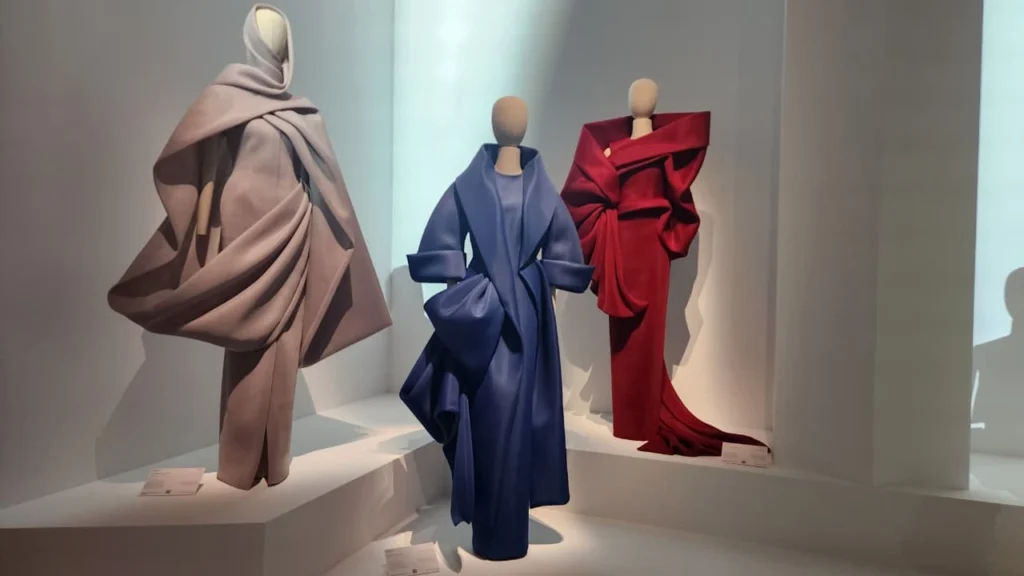The Rise of Spiritual Materialism, When Healing Becomes a Luxury Good
The Rise of Spiritual Materialism When Healing Becomes a Luxury Good Crystals cost more than diamonds, manifestation has become merchandise, and enlightenment now comes with a price tag. Is spirituality the new luxury industry? By Ami Jain I’ll admit something uncomfortable: I own a $180 rose quartz face roller. I’ve attended a $350 sound bath in a luxury hotel. I have a collection of crystals on my windowsill that cost more than my monthly groceries. And last year, I paid 1,200 dirhams for a “chakra alignment session” that, if I’m honest, felt more like expensive theater than spiritual breakthrough. I’m not proud of this. But I’m also not alone. There was a time when spirituality meant disappearing from the world: retreating inward, renouncing attachment, seeking truth in silence. Today, it arrives in satin boxes with gold-foil branding, infused with jasmine-scented aura sprays and accompanied by a QR code linking to a guided meditation voiced by a celebrity. Healing is no longer hidden in Himalayan caves. It’s displayed on marble vanities and Instagram grids, hashtagged and beautifully lit. Across the world, and especially in luxury capitals like Dubai, Los Angeles, and London, spirituality is being rebranded. Not as a sacred path, but as a lifestyle aesthetic. Sage bundles are sold beside designer candles. Crystals are no longer tokens of metaphysical belief; they are investment pieces with certificates of authenticity. Breathwork retreats cost more than a month’s rent. And the language of spirit – alignment, frequency, manifestation, energy—now circulates through influencers, brands, and billion-dollar wellness conglomerates. We are witnessing the birth of something extraordinary and troubling: spirituality as a status symbol. From Sacred to Sellable Spirituality is no longer about withdrawal. It is about display. Manifestation journals come in limited-edition leather with rose gold edges. Tarot decks are reimagined by fashion houses like Dior and Hermès. Crystal-infused water bottles promise “cellular awakening” for 450 dirhams. Even incense, once a humble prayer tool, now comes in hand-blown Murano glass holders retailing for the price of a flight to Bali. Walk into any luxury mall in Dubai – Dubai Mall, Mall of the Emirates, City Walk and you’ll find entire boutiques dedicated to what I can only call “aspirational spirituality.” The Wellness Shop. Conscious Crystals. Higher Self Home. Names that promise transcendence but deliver aesthetics. And people are buying. Not necessarily out of vanity, but out of longing. Layla, 31, a marketing director in Dubai, describes her journey into spiritual materialism with surprising self-awareness. “I started buying crystals during the pandemic. I was anxious, isolated, desperate for something to believe in. The first one was a small amethyst for maybe 40 dirhams. Then selenite towers. Then chakra sets. Then custom pieces from boutiques. Before I knew it, I’d spent thousands. Did they heal me? I don’t know. But having them made me feel like I was doing something for my spiritual health. Like I was investing in myself.” That phrase -“investing in myself” – is everywhere now. Self-care as capital expenditure. Healing as ROI. Enlightenment as asset accumulation. Dr. Nadia Al-Rashid, a psychologist practicing in Dubai Healthcare City who specializes in wellness culture, sees this pattern frequently. “Clients come to me after spending enormous amounts on spiritual services and products, feeling emptier than when they started. They’re confused because they’ve done everything right: the crystals, the courses, the cleanses. But they’ve confused spiritual consumption with spiritual practice. You cannot shop your way to enlightenment.” Yet the industry keeps growing. The global wellness economy reached $5.6 trillion in 2024, with the spiritual wellness sector – including meditation, mindfulness, and “metaphysical products”- accounting for over $120 billion. In the UAE specifically, the wellness market has grown 287% since 2019, with spiritual services and products among the fastest-growing categories. When Manifestation Becomes Marketing Manifestation once meant quiet trust in divine order. Now, it means curated Pinterest boards, 1,100 dirham “abundance workshops,” and personalized prosperity candles promising “financial ascension.” I attended one of these workshops last year at a five-star hotel in Downtown Dubai. Forty women, most in athleisure and designer accessories, gathered to learn how to “call in wealth.” We journaled. We visualized. We repeated affirmations about deserving abundance. The instructor, a wellness influencer with 380K followers, spoke confidently about quantum physics and energy frequencies. It felt empowering. It also felt deeply, uncomfortably capitalist. “Manifestation has become the modern prosperity gospel,” says Dr. Amira Khalil, a cultural studies professor at the American University of Sharjah who has researched spiritual commodification. “It places cosmic responsibility on the individual – not just to heal, but to succeed financially. And in doing so, it turns spiritual growth into a premium product. The message is: if you’re not wealthy, healthy, and thriving, you haven’t manifested correctly. It’s spirituality weaponized as meritocracy.” At luxury wellness expos in Dubai and Doha, companies now offer custom “vibration analysis” and crystal consultation services that match your “wealth frequency.” Boutiques sell “5D ascension packages” and “quantum abundance activations.” In London, wellness influencers host manifestation masterclasses that promise to unlock your “Rich Girl Era.” What used to be prayer is now a sales funnel. Zara, 23, the sustainable fashion activist I know, attended one of these events and left disturbed. “The entire thing was about attracting money, luxury, success. Nothing about compassion, service, or actual spiritual development. Just: visualize the Chanel bag, align your frequency to receive it. It was grotesque.” But is it? Or is it just spirituality meeting its moment in late-stage capitalism, doing what everything else does: adapting to market demands? The Aesthetic of Enlightenment Here’s what I keep coming back to: there is something almost poetic about how our search for the divine has become beautifully packaged. And perhaps that’s exactly why it’s working. Luxury spirituality offers aesthetics that genuinely soothe the nervous system. In a chaotic, overstimulating world, beauty becomes a portal. A rose quartz sphere on a bedside table may not guarantee emotional healing, but it looks like softness. A mala bead bracelet may not dissolve karmic patterns, but it










